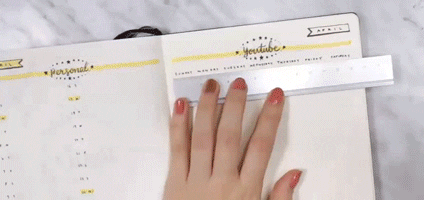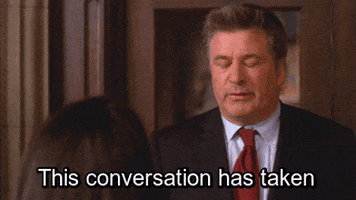When you’re ready to build, where do you start?
If you’ve been following this blog series, you’ve learned some best practices for phone prospecting, as well as mistakes to avoid on the phone. Last week I shared some shortcuts to make things more efficient for you. You’ve got a great foundation, but now it’s time to build the structure of your phone prospecting campaign.
Having a campaign means you have a plan and you know how to execute it. You’re ready to get out there, and you’re ready to win. Are you ready?
1. Have a cadence.
A cadence is your strategy, your plan, your process. Cadence means you don’t make calls on a whim without a game plan. You’ve thought it through. You have answers to these questions:
- What is the number of calls I’m going to make?
- What’s the frequency of the calls?
- What’s the messaging?
- Which elements will all come into play? (Email? Social media? etc.)
And once I build that cadence, I stick with it. This is the blueprint.
You would not build a house without having architectural plans. Same thing with your prospecting plan. You want to make sure you have your design laid out.
Interestingly, when you look at an architectural design for building your house, there’s always one image of what it will look like when completed. It’s the same for your phone prospecting cadence–you’re crafting in your mind what a successful phone call is going to look like.
2. Know your ICP.
Remember, ICP means Ideal Customer Profile. I can’t stress it enough. Too much time is wasted by making phone calls or trying to reach people who do not line up with your ICP.
The tighter the target is around your ICP, the more successful you’re going to be.
If some of this language is foreign to you, I really recommend my Masterclass all about Ideal Customer Profiles. There is so much to learn, and I’ll walk you through, step by step, creating 1-2 profiles that will help you focus your prospecting efforts more effectively. Find it here.
3. Include a CTA.
What’s your CTA? It’s a call to action. When I call you, this is what I want the next step to be.
The next step might be just to get an appointment, because I’m calling you, but I’m interrupting you. You probably don’t have time for me. So the next step might be as simple as that. The next step might be, if you’re in a short sales cycle, to actually get the order.
Likewise, the next clear ‘call to action’ might be to have you sign up for this webinar where I’ll be participating with you.
You can have any number of CTAs. The goal is to be clear and succinct with it, as part of an advanced call strategy.
I might also have a primary CTA in addition to a secondary CTA. In other words, the primary CTA might be the appointment. “Hey, let’s talk tomorrow at 10:00 AM.” If I can’t get that, then my secondary CTA is “I’m going to send you an email,” or, “Would you go to this website, download and take a look at this, and let me know what you think.”
Honestly, that’s a weak secondary, but sometimes I can’t get the primary. So at least by having you look at something and give me some feedback, I can monitor whether or not you actually did it. Finally, what does that do? That gives me insight as to how engaged or how involved you might be in this process.
4. Use time-blocking.
You’ve got to set aside the time. Choose to view time spent prospecting as an investment that will bring future gains.
Think about this: You don’t get a gym membership and think you’re going to be in shape. The gym membership becomes valuable when you actually go into the gym and work out. And that means you have to dedicate time to it.
Time-blocking is absolutely essential in terms of building your prospecting campaign. If you set aside the time, you’re setting yourself up to see results.
5. Have goals.
My goals might be the number of calls I intend to make today. Or perhaps, this is the number of prospects that I ultimately want to turn into customers.
You want to inspect what you expect. So if your goal is to make X number of calls a day, then you set that goal. By simply thinking it through and putting your mind to it, you’re much more likely to achieve it. It’s amazing how it happens.
6. Prepare talking points and statements.
Be very clear about the talking points you’re going to share, and when to share them. Of course, there are certain talking points that you may use earlier in a phone call and talking points that you might use later in a phone call, if that call is going well.
Be clear and courageous, because it allows you to exude confidence, and in turn garner trust from the person on the other end. Your confidence makes them more likely to share information with you.
7. Have some questions.
I don’t start the call off by asking dumb stuff. I start the call off by asking insightful questions that are going to engage you. But that means I have to be prepared.
Be prepared with questions that are relevant to their industry, to who they are, to their business.
In fact, it all comes back to that ICP. The clearer the ICP is, the more insightful your questions are going to be, and the more insightful your statements are going to be.
8. Know some objection responses.
There are always going to be typical objections that you hear, and you want to be very sure of your response. Have you thought it through? So you don’t get caught off guard, you should prepare how to respond.
One of the most typical ones is, “Why don’t you just email me some info and I’ll take a look at it and I’ll get back to you.” What’s your response?
I might suggest something such as: “We’ve got a lot of information we could share with you. If you could just answer two questions for me, I’ll be able to understand better what to send you now.”
Now what am I doing with that statement? I’m engaging. I’m trying to get you past this block to actually pull you in, if even just a little closer. Hopefully, if I do a good job asking two questions that engage, I can go to 3, 4, 5, 6, and I get to have a conversation. I want to be able to have a very clear, articulate response with every type of objection.
Read more about overcoming objections.
9. Check out The Sales Hunter University.
I want you to be successful with your phone prospecting. That’s why I’ve created a Masterclass that covers everything from basic strategy to the nitty gritty.
Today is the LAST DAY to be part of our early-bird special. Enroll in Phone Prospecting: How to Warm Up That Cold Call and receive an invite to my exclusive webinar on 8/26 where I share my personal strategies.
There is so much packed into this course. It’s only $59, and you get a 33-page workbook with actionable steps, 14 training videos taught by myself, and an added bonus of 19 prospecting call and voicemail scripts. Take the guesswork out of your phone prospecting, and get this course today.

Are you ready to dive into more Masterclasses, such as last month’s Ideal Customer Profile course? Consider enrolling in The Sales Hunter University as a Level 3 ‘All Access’ member and receive access to all Masterclass offerings, in addition to live coaching, and available drop-in office hours with me.
Copyright 2021, Mark Hunter “The Sales Hunter” Sales Motivation Blog. Mark Hunter is the author of A Mind for Sales and High-Profit Prospecting: Powerful Strategies to Find the Best Leads and Drive Breakthrough Sales Results.
linkedinyoutubetwitterfacebookinstagrampinterest
















